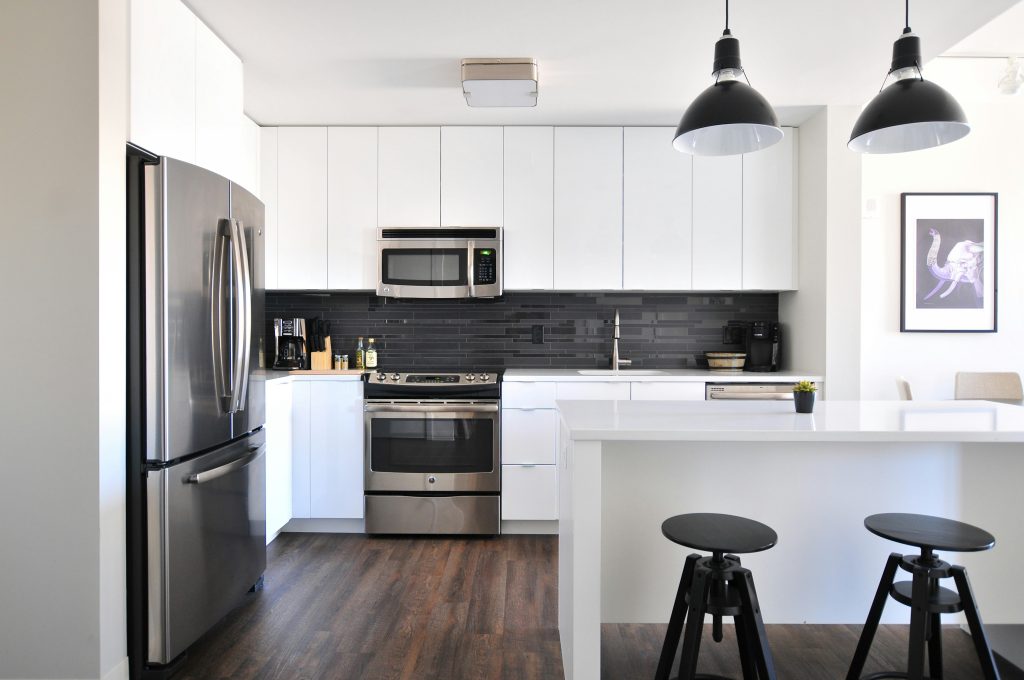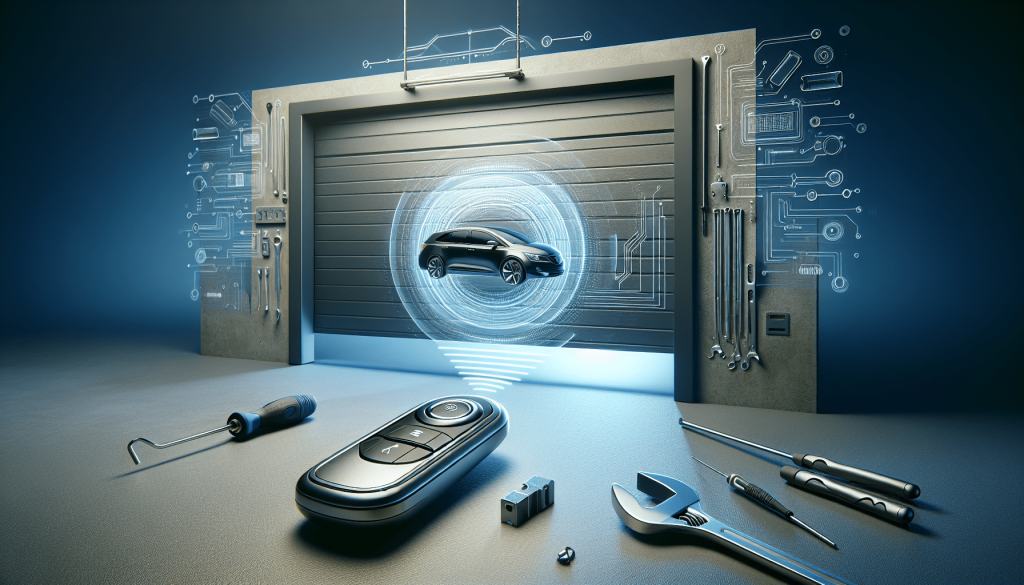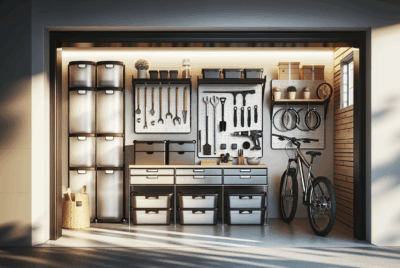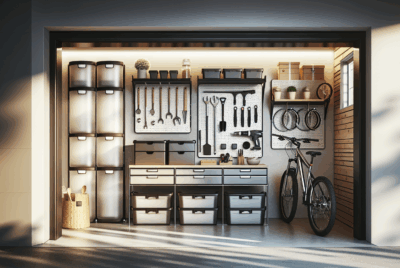How To Connect Garage Door Opener
As an Amazon Associate, I earn from qualifying purchases, at no additional cost to you. Disclaimer
I recently discovered a simple and efficient way to connect a garage door opener, and I must say, it has made my life so much easier. In this article, I will share with you the step-by-step process of connecting a garage door opener without any hassle. Whether you’re a DIY novice or have some experience with electronics, this guide will provide you with all the necessary information to successfully connect your garage door opener. So let’s get started and make your garage door opener a smart and convenient addition to your everyday routine.

Understanding Garage Door Openers
Garage door openers are a crucial component of any modern garage. They provide convenience and security by allowing us to effortlessly open and close our garage doors with just a push of a button. However, understanding how garage door openers work and identifying the right one for your needs is essential for a successful installation process.
Types of Garage Door Openers
There are several types of garage door openers available in the market today. The most common ones include chain drive, belt drive, screw drive, and direct drive openers. Chain drive openers use a metal chain to pull or push the door along the tracks. They are known for their durability and affordability but tend to be a bit noisy. On the other hand, belt drive openers use a rubber belt, providing a quieter operation. Screw drive openers utilize a threaded rod mechanism, and they are relatively quiet. Lastly, direct drive openers have a motor that moves the door along a stationary chain, resulting in a near-silent operation.
Components of Garage Door Openers
To understand how garage door openers work, it’s essential to familiarize yourself with their key components. The main parts of a garage door opener include the motor, drive system, trolley, photoelectric sensors, wall switch, remote control, and the emergency release cord. The motor is responsible for powering the opener, while the drive system determines how the opener moves the door. The trolley connects the opener to the door, allowing it to slide along the rails. The photoelectric sensors are safety features that detect obstacles, preventing the door from closing on objects or people. The wall switch and remote control are the primary means of operating the garage door opener, while the emergency release cord allows you to manually open or close the door in case of a power outage.
How Garage Door Openers Work
Garage door openers operate using a simple mechanism. When you activate the opener, the motor turns on and drives the trolley attached to the door. The trolley moves along the rails, either pulling the door up or pushing it down. To ensure safety, garage door openers are equipped with photoelectric sensors that detect if there is an obstruction in the door’s path. If an obstacle is detected, the opener will stop or reverse its operation to prevent accidents. The wall switch and remote control send signals to the opener, telling it to either open or close the door. Overall, garage door openers provide an efficient and secure way to operate your garage door.
Identifying the Right Garage Door Opener
Choosing the right garage door opener is crucial to ensure smooth and reliable operation. Here are a few factors to consider when identifying the right opener for your garage:
Considering the Type of Garage Door
The type of garage door you have plays a crucial role in determining the appropriate opener. Different types of doors, such as sectional, tilt-up, or roll-up doors, have varying requirements. For example, heavier doors may require a stronger motor and drive system to handle the weight. It is essential to consult the manufacturer’s recommendations or seek professional advice to ensure compatibility between the door and the opener.
Assessing the Weight of the Door
The weight of your garage door is another important consideration. Manufacturers usually specify the maximum weight that their openers can handle. If your door exceeds the recommended weight capacity, it can strain the opener and lead to malfunctions or even damage. It is vital to accurately measure the weight of your door and select an opener that can handle the load effectively.
Planning for the Drive System
The drive system of the garage door opener determines how the motor moves the door. As mentioned earlier, chain drive openers are durable and affordable but tend to be noisy. If your garage is detached or located away from living spaces, the noise may not be a significant concern. However, if your garage is attached or situated near living areas, you may want to consider a belt drive or direct drive opener for quieter operation.

Preparing for Installation
Before installing the garage door opener, proper preparation is essential to ensure a smooth and hassle-free process. Here are some essential steps to follow:
Assembling Required Tools
To install a garage door opener, you will need specific tools. These typically include a power drill, adjustable wrench, screwdrivers, pliers, a level, and a tape measure. It is helpful to gather all the necessary tools beforehand to avoid interruptions during the installation process. Additionally, reading the installation manual provided by the manufacturer can give you a better idea of the tools required for your specific opener.
Creating an Installation Plan
Having a clear installation plan is crucial to avoid mistakes and ensure a successful outcome. Before starting the installation, carefully read and understand the instructions provided by the manufacturer. Create a step-by-step plan, taking note of any specific requirements or precautions mentioned in the manual. This will help you stay organized and minimize errors during the installation process.
Ensuring Safety Precautions
Safety should always be a top priority when working with garage door openers. Before starting the installation, make sure to unplug or disconnect the power source to prevent any accidental activations. It is also vital to wear appropriate safety gear, such as gloves and safety glasses, to protect yourself from potential injuries. If you are uncertain about any aspect of the installation process, consider seeking professional assistance to ensure a safe and proper installation.
Installing the Garage Door Opener
Once you have completed the necessary preparations, you are ready to install the garage door opener. Here are the key steps involved in the installation process:
Attaching the Rail
Start by attaching the rail or track to the ceiling of your garage. The rail provides a pathway for the door as it opens and closes. Follow the manufacturer’s instructions for the proper placement and alignment of the rail. Use the provided hardware, such as lag screws or lag bolts, to secure the rail firmly into place. Ensure that the rail is level and properly aligned with the garage door’s center.
Mounting the Opener
Next, mount the opener itself to the ceiling or the wall of your garage. Use sturdy brackets or a mounting bracket to secure the opener in place. Make sure to follow the manufacturer’s instructions regarding the positioning and height of the opener. Ensure that the opener is level and adequately aligned with the rail and the garage door.
Installing the Chain or Belt
If you are installing a chain or belt drive opener, this is the time to install the chain/belt and connect it to the trolley. Follow the manufacturer’s instructions carefully to determine the appropriate tension and alignment of the chain or belt. Make any necessary adjustments to ensure smooth movement of the trolley along the rail.

Configuring the Garage Door Opener Settings
Once the installation is complete, it’s time to configure the settings of your garage door opener. This involves adjusting various parameters to ensure proper operation and safety. Here are some essential settings to consider:
Adjusting Open and Close Limits
Most garage door openers allow you to adjust the open and close limits. This determines how far the door opens and closes. Follow the manufacturer’s instructions on how to set these limits to prevent the door from opening or closing too far, which can cause damage or hazards.
Setting Up Safety Reverse System
The safety reverse system is a critical safety feature of garage door openers. It ensures that the door reverses its operation if it encounters an obstruction while closing. Test the safety reverse system according to the manufacturer’s instructions to ensure it is functioning correctly. If necessary, make adjustments to the sensitivity settings to ensure proper operation.
Programming the Remote Control
Programming the remote control allows you to wirelessly operate the garage door opener. Refer to the manufacturer’s instructions to learn how to program the remote control effectively. Typically, this involves pressing specific buttons on the opener itself or inputting a code into the remote control.
Testing the Garage Door Opener
After configuring the settings, it is crucial to conduct thorough testing of the garage door opener to ensure its proper functioning and safety. Here are some key steps to follow during the testing process:
Performing a Dry Run
Before testing the opener with the door, perform a dry run without anything obstructing the door’s path. This will allow you to observe the movement of the trolley and assess any unusual sounds or malfunctions. Check if the door opens and closes smoothly and stops when it should.
Checking the Safety Features
During the testing process, pay close attention to the garage door opener’s safety features, such as the photoelectric sensors and the safety reverse system. Test the effectiveness of the sensors by placing an object in the door’s path and ensuring that the door stops or reverses its operation. This will help ensure the safety of people and objects in the garage.
Assessing the Overall Functionality
Finally, assess the overall functionality of the garage door opener. Open and close the door several times to test its response time and smoothness of operation. Listen for any unusual noises and take note of any issues or malfunctions that need to be addressed.

Troubleshooting Common Issues
Even with proper installation and testing, garage door opener issues may still arise. Here are some common problems and troubleshooting steps:
Addressing Noises
If your garage door opener is making unusual noises, such as grinding, squeaking, or rattling sounds, it may indicate a problem with the motor, tracks, or other components. Inspect the tracks for any obstructions or damage and lubricate them if necessary. Additionally, check the fasteners and connections to ensure they are tight and secure. If the problem persists, consulting a professional may be necessary.
Fixing Non-Opening Door
If your garage door fails to open, first check if the opener is receiving power and that the emergency release cord is not engaged. Ensure that the door is not obstructed by any objects, such as ice, debris, or items stored too close to the door. Inspect the door’s springs, cables, and other components for any signs of damage or wear. If you are unable to identify or fix the issue, it is best to seek professional assistance to avoid further damage.
Resolving Remote Control Problems
If the remote control fails to operate the garage door opener consistently, check the batteries and replace them if necessary. Ensure that the remote control is within range and that there are no obstructions between the remote and the opener. If programming the remote control did not resolve the issue, consult the manufacturer’s troubleshooting guide or contact their customer support for further assistance.
Performing Regular Maintenance
To keep your garage door opener in optimal condition, regular maintenance is crucial. Here are some essential maintenance tasks to perform:
Lubricating Moving Parts
Periodically lubricate the moving parts of the garage door opener, such as the tracks, rollers, hinges, and chain/belt. Use a suitable lubricant recommended by the manufacturer to reduce friction, prevent wear, and ensure smooth operation. However, avoid over-lubricating as it can attract dirt and debris, leading to potential issues.
Inspecting and Replacing Worn Components
Regularly inspect the various components of the garage door opener, including the motor, belts, chains, springs, and cables, for any signs of wear, damage, or misalignment. If you notice any issues, such as frayed cables or damaged springs, it is crucial to address them promptly. Worn components can lead to poor performance, potential accidents, or even complete opener failure.
Checking Alignment and Balance
Periodically check the alignment and balance of the garage door. Misaligned tracks or an imbalanced door can strain the opener and affect its performance. Use a level to ensure that the tracks are properly aligned and adjust them if necessary. If the door does not stay in place when manually opened or closed, it may indicate an imbalance that needs to be addressed.

Understanding Smart Garage Door Openers
Smart garage door openers bring a new level of convenience and control to your garage. Here are some essential insights into smart garage door openers:
Benefits of Smart Garage Door Openers
Smart garage door openers offer several benefits over traditional ones. With smart openers, you can remotely monitor and control your garage door using smartphone apps or voice commands. This enables you to open or close the door from anywhere, providing convenience and peace of mind. Additionally, many smart openers offer advanced security features, such as real-time alerts and integration with home security systems.
Connecting the Garage Door Opener to your WiFi
To enjoy the smart features, you need to connect your garage door opener to your home’s WiFi network. Follow the manufacturer’s instructions to connect the opener to your WiFi and complete the setup process. Ensure that your WiFi signal is strong enough in the garage area for reliable operation.
Programming and Using Smartphone Apps
Once connected to WiFi, you can download and install the manufacturer’s smartphone app to control your garage door opener. The app allows you to open or close the door remotely, monitor its status, set schedules, and receive notifications. Familiarize yourself with the app’s features and settings to make the most out of your smart garage door opener.
Replacing an Old Garage Door Opener
Over time, garage door openers may wear out or become outdated, necessitating a replacement. Here are some considerations for replacing an old garage door opener:
When to Replace an Old Garage Door Opener
If your garage door opener is more than 10 years old or experiencing frequent malfunctions, it may be time for a replacement. Newer models offer improved safety features, energy efficiency, and smart capabilities that older openers may lack. Additionally, if your current opener struggles to handle the weight or size of your garage door, a replacement can provide a more suitable and reliable solution.
Choosing a New Garage Door Opener
When selecting a new garage door opener, consider factors such as the type of drive system, horsepower rating, noise level, security features, and smart capabilities. Determine your specific needs and preferences to choose an opener that best meets your requirements. It may also be helpful to read customer reviews and seek professional advice to make an informed decision.
Properly Removing and Disposing of the Old Unit
When removing the old garage door opener, ensure that you follow proper safety measures and disconnect the power supply. If you are uncertain or uncomfortable with the removal process, it is best to hire a professional to avoid any potential accidents. Additionally, dispose of the old opener according to the regulations in your area. Some recycling programs or local waste management facilities may offer options for proper disposal of electronic devices.
In conclusion, understanding garage door openers and following proper installation, maintenance, and troubleshooting procedures are vital for their reliable and safe operation. By identifying the right opener for your needs, preparing adequately, and performing regular maintenance, your garage door opener can continue to provide convenience and security for years to come. Whether you choose a traditional or smart garage door opener, remember to prioritize safety and consult professional help when needed to ensure optimal performance and longevity.




